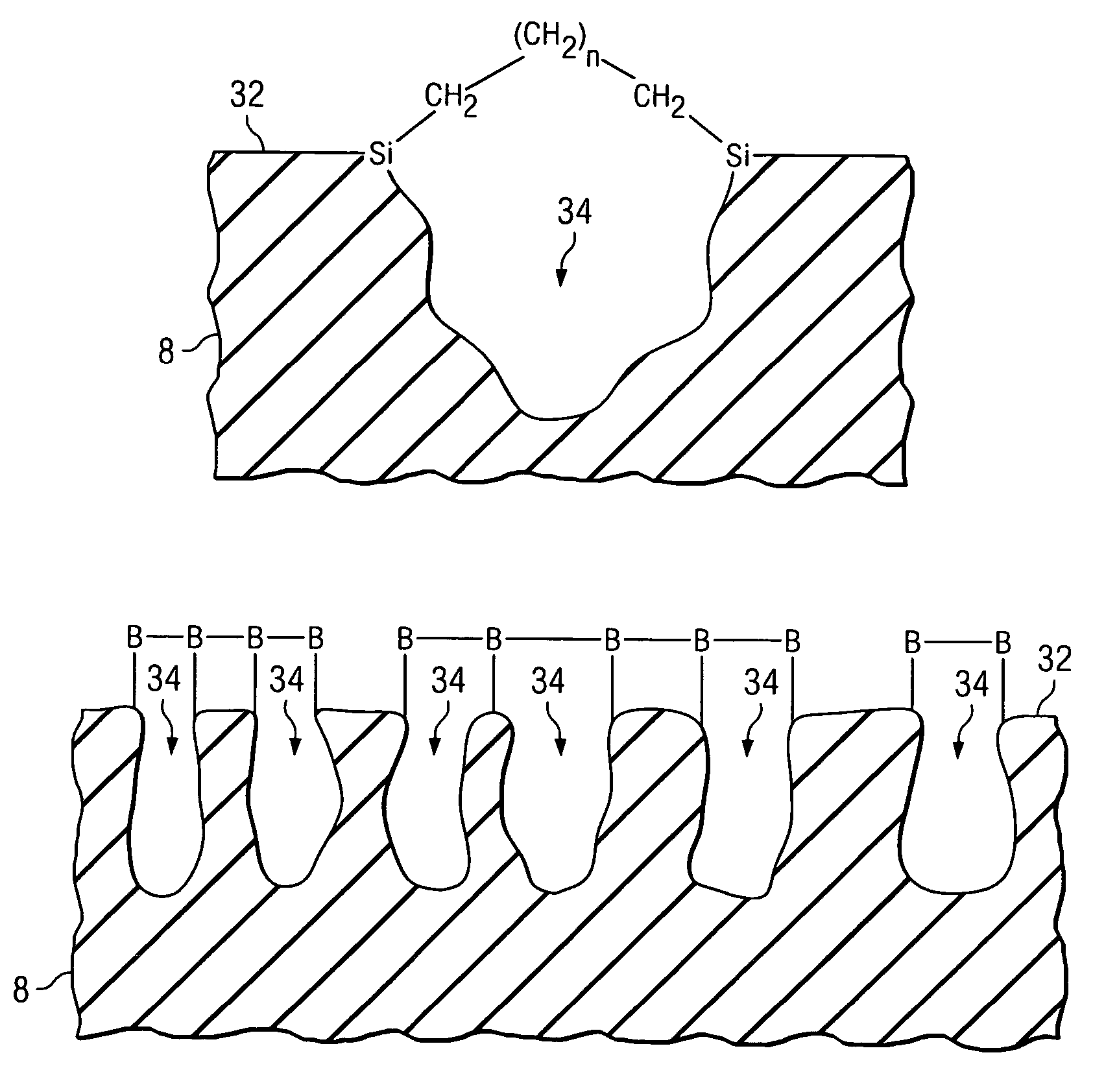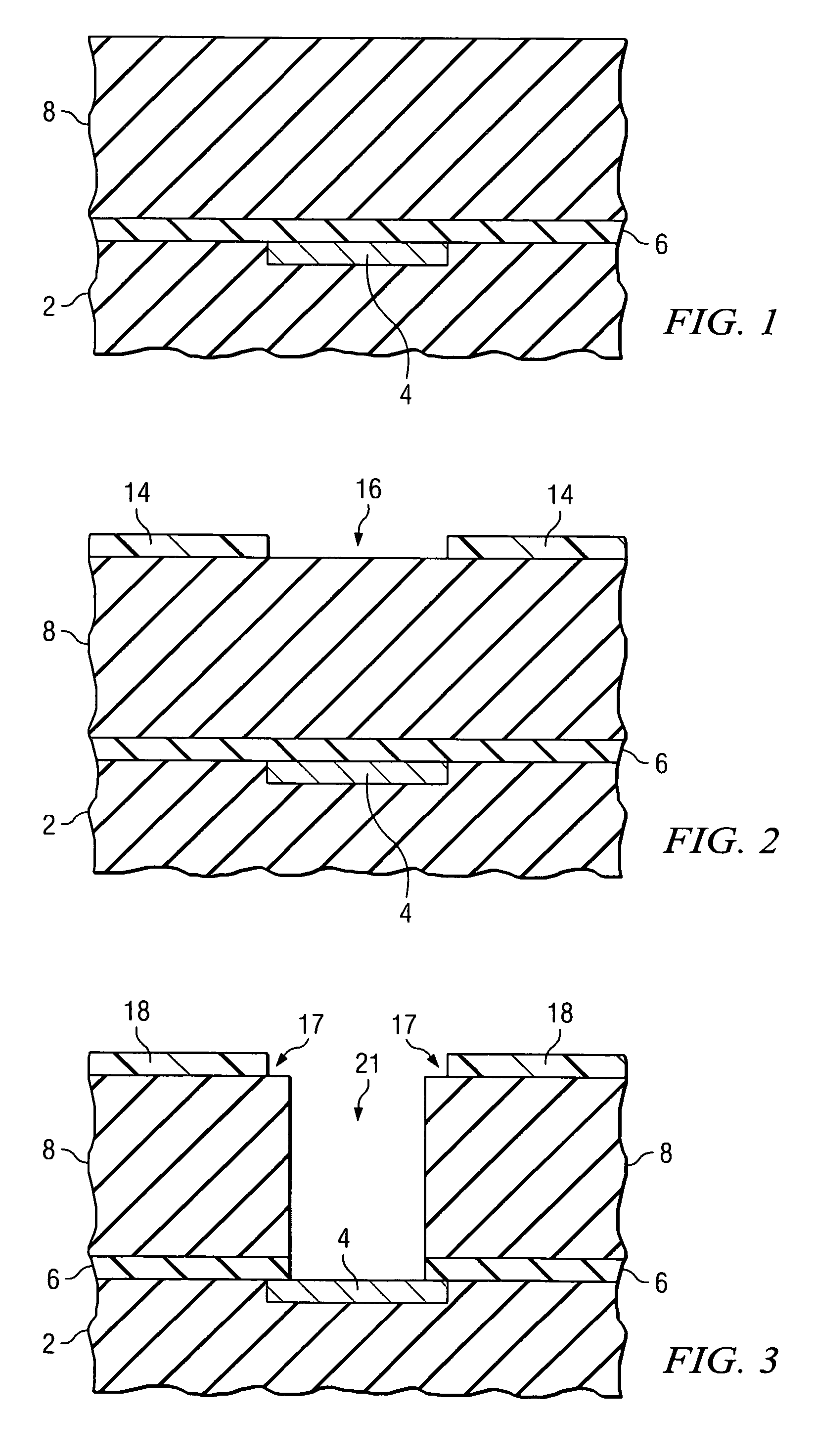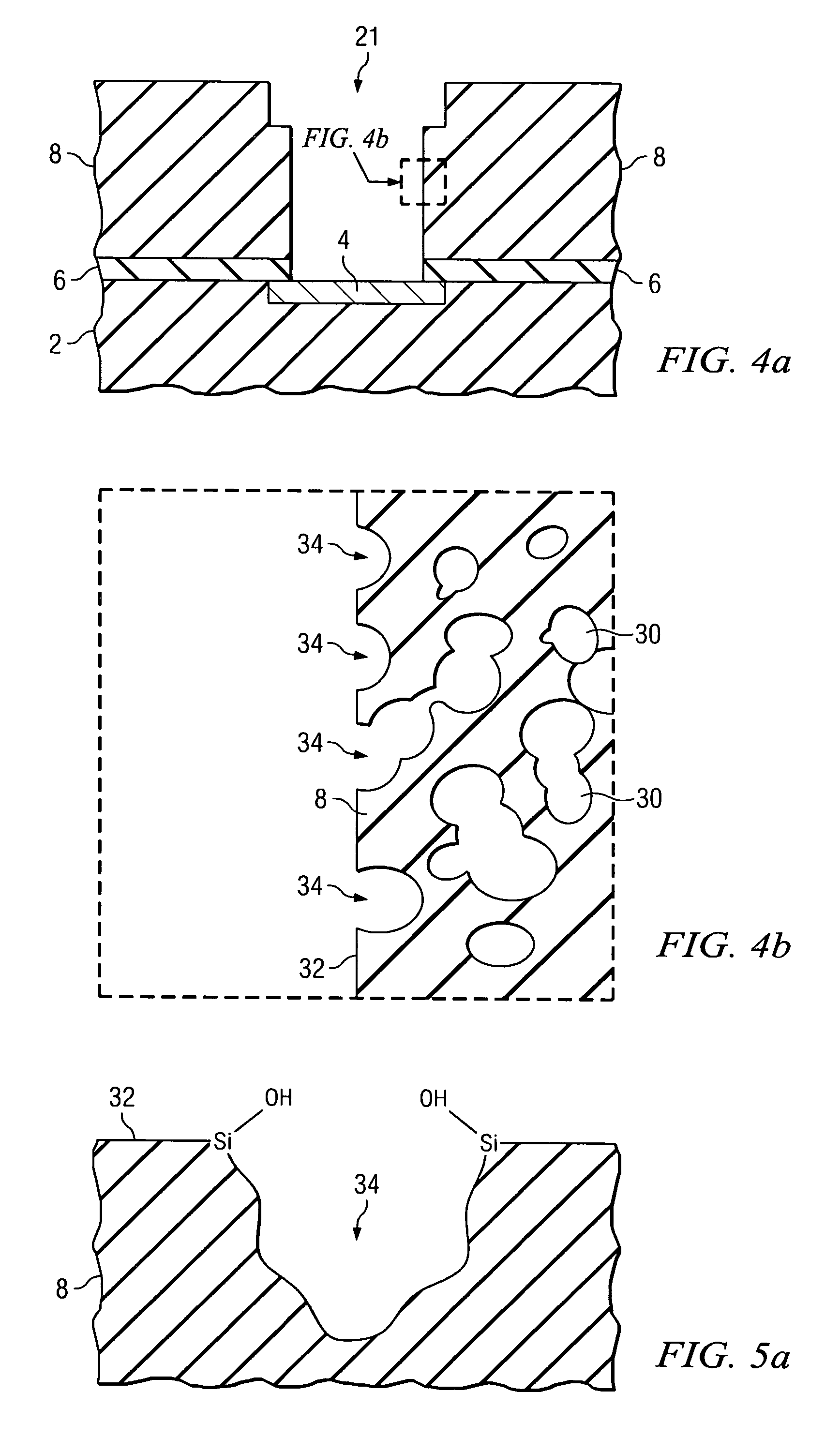Using polydentate ligands for sealing pores in low-k dielectrics
a technology of polydentate ligands and dielectrics, which is applied in the direction of coatings, metallic material coating processes, chemical vapor deposition coatings, etc., can solve the problems of low-k materials that suffer from frequent carbon depletion at the surface, damage may extend into the bulk as well, and are susceptible to damage from plasma etching and ashing processes used in device fabrication
- Summary
- Abstract
- Description
- Claims
- Application Information
AI Technical Summary
Benefits of technology
Problems solved by technology
Method used
Image
Examples
Embodiment Construction
[0023]The making and using of the presently preferred embodiments are discussed in detail below. It should be appreciated, however, that the present invention provides many applicable inventive concepts that may be embodied in a wide variety of specific contexts.
[0024]In preferred embodiments, a polydentate, pore-sealing ligand is used to seal or close pores damaged by plasma or other manufacturing processes. Although ligands are well known in the chemical arts, the terminology may not be familiar to those in semiconductor manufacturing. Accordingly, a few terms are briefly reviewed.
[0025]Ligands that bond to only single functional group through one site are termed monodentate. Some ligand molecules are able to bind to multiple sites, due to having free lone pairs on more than one atom. These are called polydentate ligands. Bidentate ligands, which bond at two sites, are often referred to in the chemical arts as a chelating ligand, or as a chelating agent. Ethylene diamine tetraacet...
PUM
| Property | Measurement | Unit |
|---|---|---|
| dielectric constant | aaaaa | aaaaa |
| dielectric constants | aaaaa | aaaaa |
| thick | aaaaa | aaaaa |
Abstract
Description
Claims
Application Information
 Login to View More
Login to View More - R&D
- Intellectual Property
- Life Sciences
- Materials
- Tech Scout
- Unparalleled Data Quality
- Higher Quality Content
- 60% Fewer Hallucinations
Browse by: Latest US Patents, China's latest patents, Technical Efficacy Thesaurus, Application Domain, Technology Topic, Popular Technical Reports.
© 2025 PatSnap. All rights reserved.Legal|Privacy policy|Modern Slavery Act Transparency Statement|Sitemap|About US| Contact US: help@patsnap.com



